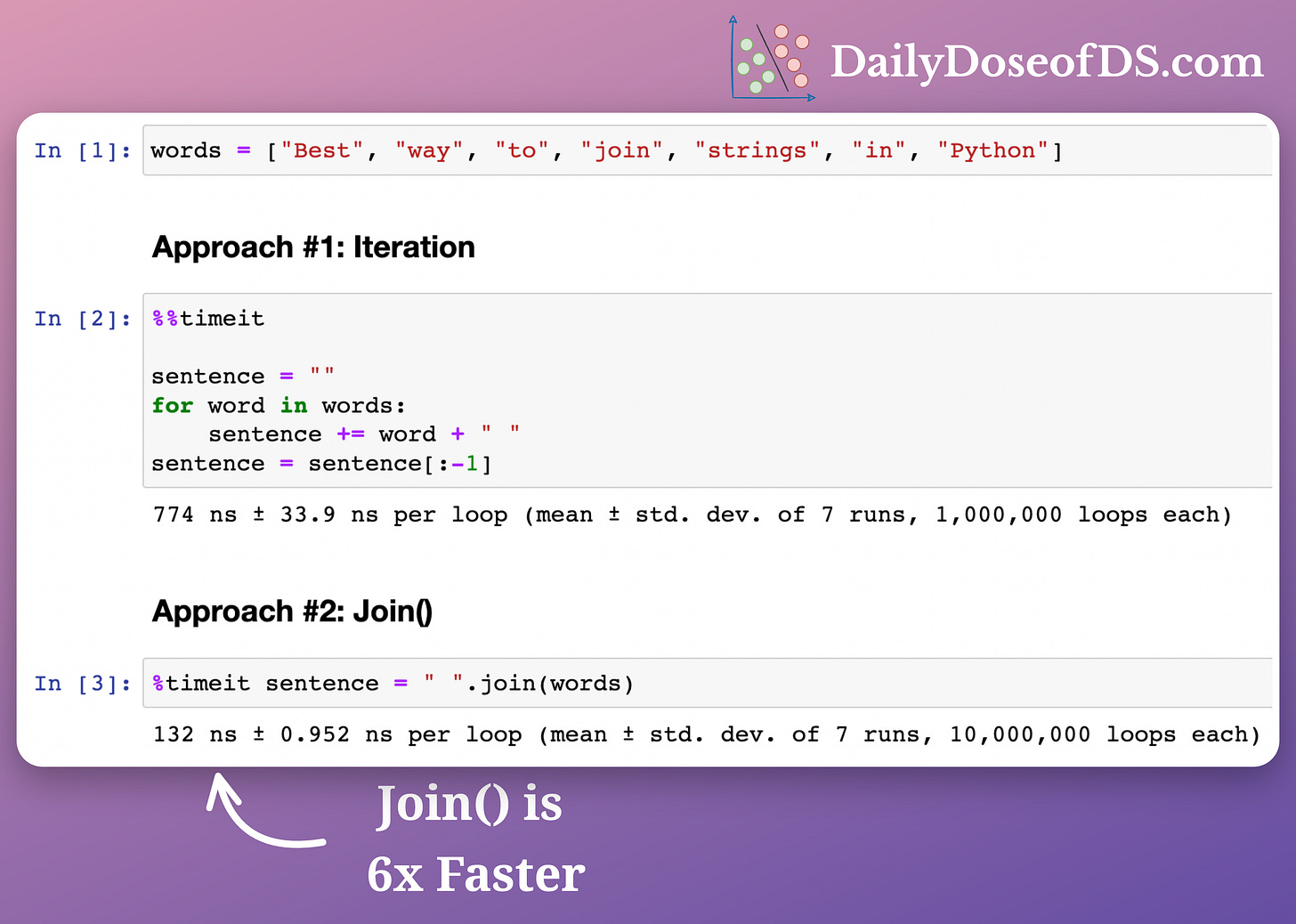What Makes The Join() Method Blazingly Faster Than Iteration?
A reminder to always prefer specific methods over a generalized approach.
There are two popular ways to concatenate multiple strings:
Iterating and appending them to a single string.
Using Python’s in-built
join()method.
But as shown above, the 2nd approach is significantly faster than the 1st approach.
Here’s why (or maybe stop reading here and try to guess before you read ahead).
When iterating, Python naively executes the instructions it comes across.
Thus, it does not know (beforehand):
number of strings it will concatenate
number of white spaces it will need
In other words, iteration inhibits the scope for optimization.
As a result, at every iteration, Python asks for a memory allocation of:
the string at the current iteration
the white space added as a separator
This leads to repeated calls to memory. To be precise, the number of calls, in this case, is two times the size of the list.
However, with join(), Python precisely knows (beforehand):
number of strings it will be concatenating
number of white spaces it will need
All these are applied for allocation in a single call and are available upfront before concatenation.
To summarize:
with iteration, the number of memory allocation calls is 2x the list's size.
with
join(), the number of memory allocation calls is just one.
This explains the significant difference in their run-time.
This post is also a reminder to always prefer specific methods over a generalized approach. What do you think?
👉 Over to you: What other ways do you commonly use to optimize native Python code?
👉 Read what others are saying about this post on LinkedIn and Twitter.
👉 Tell the world what makes this newsletter special for you by leaving a review here :)
👉 If you liked this post, don’t forget to leave a like ❤️. It helps more people discover this newsletter on Substack and tells me that you appreciate reading these daily insights. The button is located towards the bottom of this email.
👉 If you love reading this newsletter, feel free to share it with friends!
👉 Sponsor the Daily Dose of Data Science Newsletter. More info here: Sponsorship details.
Find the code for my tips here: GitHub.
I like to explore, experiment and write about data science concepts and tools. You can read my articles on Medium. Also, you can connect with me on LinkedIn and Twitter.





Always great to refresh knowledge about memory allocation and freeing, especially in loops!